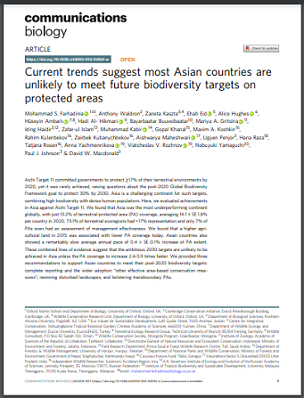
Aichi Target 11 committed governments to protect ≥17% of their terrestrial environments by 2020, yet it was rarely achieved, raising questions about the post-2020 Global Biodiversity Framework goal to protect 30% by 2030. Asia is a challenging continent for such targets, combining high biodiversity with dense human populations. Here, we evaluated achievements in Asia against Aichi Target 11. We found that Asia was the most underperforming continent globally, with just 13.2% of terrestrial protected area (PA) coverage, averaging 14.1 ± SE 1.8% per country in 2020. 73.1% of terrestrial ecoregions had <17% representation and only 7% of PAs even had an assessment of management effectiveness. We found that a higher agricultural land in 2015 was associated with lower PA coverage today. Asian countries also showed a remarkably slow average annual pace of 0.4 ± SE 0.1% increase of PA extent. These combined lines of evidence suggest that the ambitious 2030 targets are unlikely to be achieved in Asia unless the PA coverage to increase 2.4-5.9 times faster. We provided three recommendations to support Asian countries to meet their post-2020 biodiversity targets: complete reporting and the wider adoption “other effective area-based conservation measures”; restoring disturbed landscapes; and bolstering transboundary PAs.














